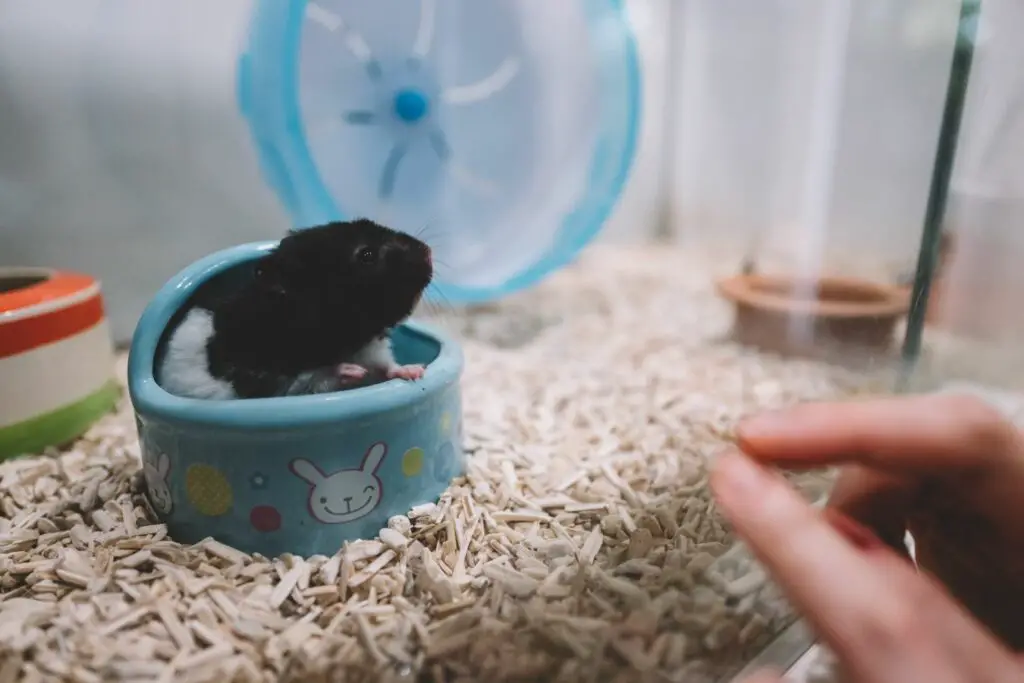Hamster Cage Rage, sometimes referred to as “Cage Syndrome,” is a term used to describe a condition in which a hamster displays aggressive and destructive behavior due to inadequate living conditions. This can range from biting the cage bars to attacking their own toys or other hamsters.
Hamster Cage Rage is a serious issue that can lead to physical and emotional harm for both the hamster and their owners.

Signs and Symptoms of Hamster Cage Rage
It’s important to recognize the signs and symptoms of Hamster Cage Rage so that you can take action before it escalates. Some common signs include excessive chewing or gnawing on the cage bars, aggressive behavior towards toys, other hamsters or even humans, and constant attempts to escape the cage.
You may also notice changes in your hamster’s sleep schedule, as well as a decrease in appetite and activity level.
Causes of Hamster Cage Rage
There are several factors that can contribute to Hamster Cage Rage, and it’s important to address each one in order to prevent and treat the condition.
Inadequate Cage Size and Setup
One of the leading causes of Hamster Cage Rage is a lack of adequate space and setup in the cage. Hamsters are active animals that require plenty of room to exercise and explore. A cage that is too small can lead to boredom and frustration, which can manifest in aggressive behavior.
Lack of Enrichment and Stimulation
Hamsters are intelligent animals that crave mental stimulation and enrichment. Without proper toys and activities, they can become bored and restless, leading to destructive behavior.
Poor Nutrition and Health
A hamster’s diet and overall health can also play a role in their behavior. A lack of proper nutrition can lead to lethargy and irritability, while underlying health issues can cause stress and discomfort.
Preventing Hamster Cage Rage
Preventing Hamster Cage Rage requires a proactive approach to your hamster’s care. By addressing the causes of the condition, you can ensure that your hamster is happy and healthy.
Choosing the Right Cage Size and Setup
When selecting a cage for your hamster, it’s important to choose one that is the appropriate size for their species. Syrian hamsters, for example, require at least 450 square inches of floor space, while dwarf hamsters can thrive in slightly smaller cages.
Additionally, the cage should be equipped with plenty of toys, such as hammocks and tunnels, and hiding places to keep your hamster entertained.
Providing Enrichment and Stimulation
To prevent boredom and frustration, it’s important to provide your hamster with plenty of mental stimulation. This can include toys, puzzles, and a running wheel. You can also create a stimulating environment by rotating toys and changing up the cage setup from time to time.
Maintaining Proper Nutrition and Health
A healthy diet and regular veterinary check-ups are essential for preventing Hamster Cage Rage. Ensure that your hamster’s diet is balanced and provides all necessary nutrients, and don’t hesitate to seek veterinary care if you notice any changes in their behavior or health.
Treating Hamster Cage Rage
If you suspect that your hamster is displaying signs of Hamster Cage Rage, it’s important to take action as soon as possible. Treatment options may include:
Consulting with a Veterinarian
A veterinarian can help determine if there are any underlying health issues contributing to your hamster’s behavior. They may also be able to provide advice on changes to the cage setup or diet.
Behavioural Interventions
Behavioral interventions can include positive reinforcement training or providing a calmer, more predictable environment for your hamster. This may involve limiting exposure to loud noises or other sources of stress.
Adjusting the Cage Setup and Size
If your hamster’s cage is too small or lacks proper enrichment, adjusting the setup may be necessary. This could involve adding more toys, providing more hiding places, or upgrading to a larger cage.
Conclusion
In conclusion, Hamster Cage Rage is a serious condition that can be prevented and treated through proper care and attention.
By providing your hamster with a spacious, stimulating environment and a healthy diet, you can ensure that they remain happy and healthy. If you notice any signs of Hamster Cage Rage, don’t hesitate to seek veterinary care and take action to address the underlying causes. With the right care and attention, your hamster can thrive and bring joy to your life for years to come.
- How Long Do American Eskimo Dogs Live? Important Factors and Care Tips - September 29, 2023
- Do American Bulldogs Need Grooming? Essential Tips and Care Guidelines - September 29, 2023
- Do Bengal Cats Enjoy Playing? Essential Tips for Keeping Them Active - September 29, 2023